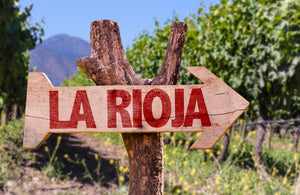
La Rioja is a wine-producing region in Spain that has been making wine for over 2,000 years. The Rioja region is located in the north-central part of Spain, on both sides of the River Ebro, and its climate is influenced by both the Atlantic Ocean and the Mediterranean Sea. The soil in Rioja is mostly clay and limestone, which provides good drainage and helps to keep the vines healthy.
If you're a fan of Spanish wines, then you're probably familiar with Rioja. But what you may not know is that Rioja is actually divided into three sub-regions: Rioja Alta, Rioja Baja, and Rioja Alavesa.
Rioja Alta:
Located in the northwestern part of the Rioja region at high altitude levels, with a variety of soil types. The climate here is cooler than in the other sub-regions, which results in wines that are more aromatic and have higher acidity. The most famous vineyards in Rioja Alta are located in the villages of Laguardia and Elciego.
The wines of Rioja Alta tend to be well-balanced, with soft tannins and a long finish. Popular grape varieties from Rioja Alta include Tempranillo, Garnacha, and Graciano.
Rioja Alavesa:
Rioja Alavesa is the smallest and most northern sub-region of Rioja. It is located entirely within the province of Alava, bordering the Basque Country to the north. The climate here is cooler than in Rioja Alta, with more Atlantic influence. This results in wines that are even more aromatic and have higher acidity.
Wines from this sub-region are typically the lightest of Rioja, with more finesse.
Rioja Orientale (previously known as Rioja Baja):
Rioja Orientale is a wine-growing region in northeast Spain, located south of the Ebro River. The climate is continental with hot, dry summers and cold winters. The soil is mostly clay and limestone. The predominant grape varieties are Tempranillo, Garnacha and Graciano.
Rioja Orientale wines are typically fruit-forward and easy to drink. They are often made in a style called "joven," which means "young" in Spanish. This refers to the fact that the wines are not aged in oak barrels before being bottled.

Key Grape Varieties:
There are three key grape varieties grown in Rioja: Tempranillo, Garnacha and Graciano. Tempranillo is the most widely planted variety and is responsible for the classic Rioja red wines. Garnacha is often used for blending purposes, adding body and fruitiness to the wine. Graciano is a lesser known variety, but it is prized for its high acidity and is often used in reserve wines. Rioja red wines are typically a blend of these three grape varieties, with Tempranillo making up the majority of the blend.
With over 65,000 hectares of vineyards, the primary grape variety grown in Rioja is Tempranillo, which makes up about 80% of all the grapes planted in the region. Tempranillo is a versatile grape that can be used to make many different styles of wine, from light and fruity Rosados to rich and powerful Reservas.
The history of Rioja wine is closely linked to the history of Tempranillo. The first mention of Tempranillo in Spain dates back to the 16th century, when it was mentioned in a book about Spanish grape varieties. However, it is believed that the grape actually originated in the Rioja region.
For many years, Rioja wines were made in a very traditional style, with long ageing in oak barrels. This gave the wines a deep golden colour and a complex flavour profile. In the early 1990s, Rioja winemakers began experimenting with new styles of wine, such as barrel-fermented white wines and unoaked red wines. These new styles quickly caught on with consumers and helped to put Rioja on the map as a world-class wine region.

The Spanish law defines four age categories for its wines, which are; JOven, Crianza, Reserva and Gran Reserva. Many producers exceed the minimum age requirements and Gran Reserva wines are only produced in the best vintages.
Rioja joven wines are the youngest category of Rioja wine, and must be aged for a minimum of two months before release. Joven wines are typically fruity and approachable, making them ideal for early consumption.
Crianza wines must be aged for a minimum of one year in oak barrels, with at least six months in bottle prior to release. These wines are typically more complex than joven wines, with greater depth of flavour and structure.
Reserva wines must be aged for a minimum of three years in oak barrels, with at least one year in bottle prior to release. These wines are the pinnacle of Rioja winemaking, and represent the very best that the region has to offer. Reserva wines are typically complex and deeply flavourful, with immense ageing potential.
Gran Reserva is the highest quality classification in the Rioja wine region. Gran Reserva wines must be aged for a minimum of 24 months in oak barrels and 3 years total before release. Rioja Gran Reservas are some of the longest lived red wines, often improving for decades after bottling.
Today, Rioja is home to over 500 wineries, and the region produces both red and white wines. The most popular style of Rioja wine is still the traditional red wine, which is made with 100% Tempranillo grapes. These wines are typically aged for at least two years in oak barrels before being released.
If you're looking for a delicious and versatile red wine to pair with food, look no further than Rioja! Whether you prefer the traditional style or something new and exciting, Rioja has a wine to suit your taste.


